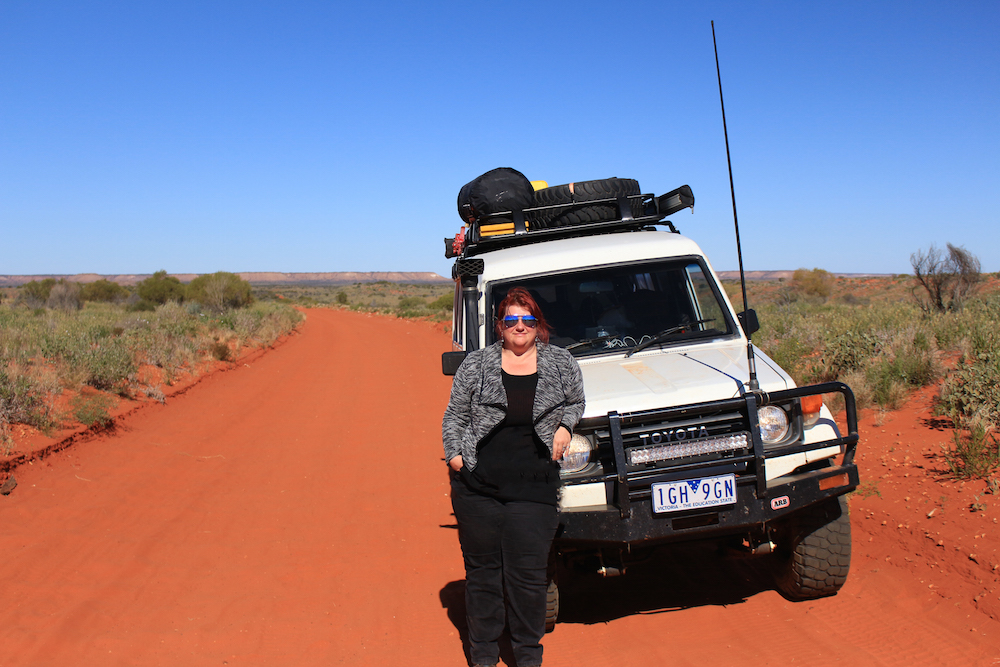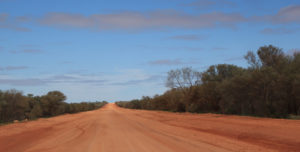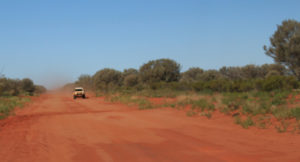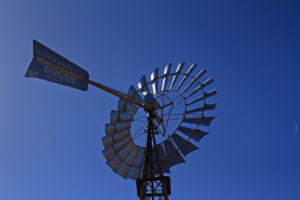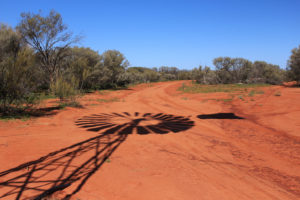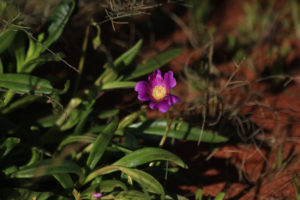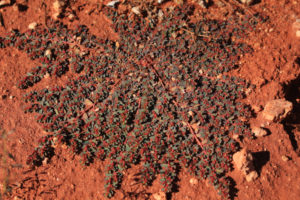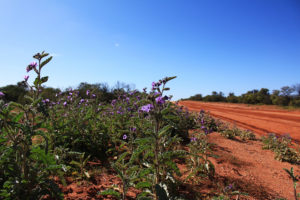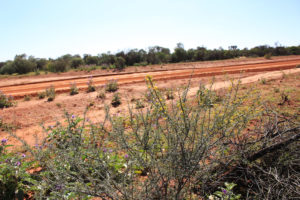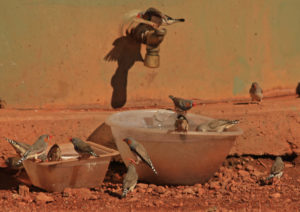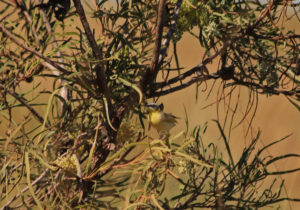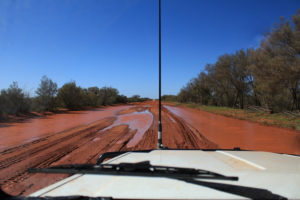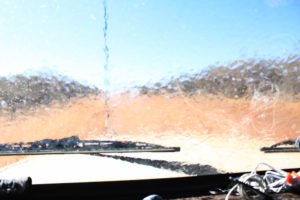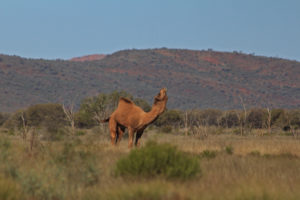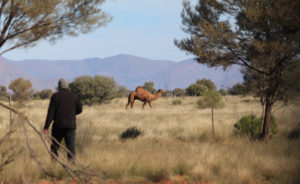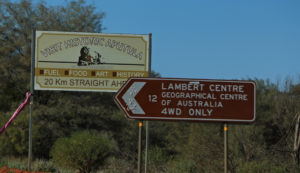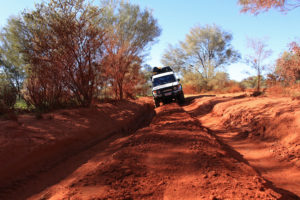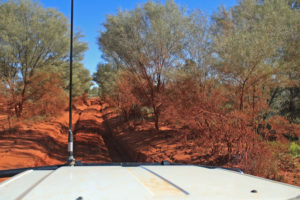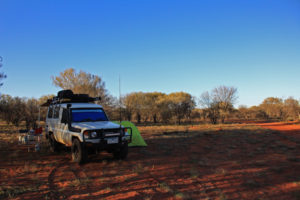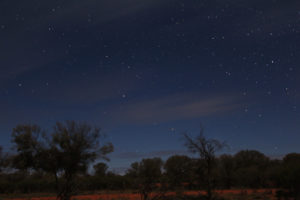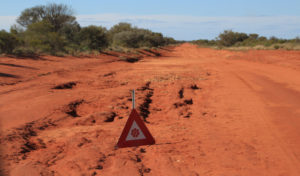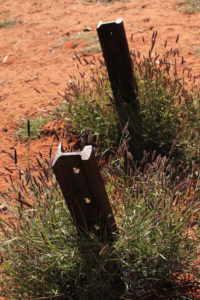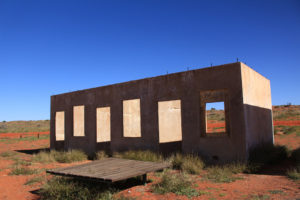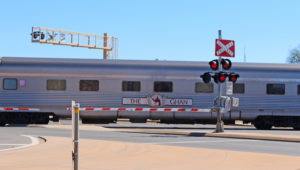There’s the so-called Red Centre of Australia – which includes Uluru. And then there’s the Dead Centre. We shot down the aptly-named Gun Barrel Highway to pay it a visit.
If you look at a map you can seen why the Gun Barrel was so named. Len Beadell – surveyor and road builder extraordinaire – wanted it to be as straight as the very same.
Nice work Len!
Despite its appealing straightness, it is now a road less travelled.
We found a lovely example of another Australian classic along the way. Water-pumping windmills have been a lifeline for farmers across the country. The Southern Cross windmill was first built in 1876 and the steel-bladed water-bringers have been cranking through the outback since.
The windmills of the outback kept the water flowing and the people and cattle going.
Just a little bit of water is all it needs to keep the desert growing too, it seems. Far from being an empty wasteland, plants and flowers spring up at the sides of the track.
Of course water is great for flowers and cows, but not so great for 3 ton wagons like ours and we had to pick our way carefully.
We found some slightly bigger hazards too, but thankfully they were behind a fence.
Having travelled a short section of the Gun Barrel, we turned up onto the track leading to Lambert’s Centre – the geographical centre of Australia.We can only assume that visitors aren’t very welcome at the Centre – it took us more than a hour to travel 14km on one of the worst roads we have covered so far.
Bruce Lambert (of the Centre) was one of Australia’s most decorated surveyors and explorers, but ironically never made it to the landmark that bears his name. Perhaps if he had, he might have had something to say about the road.
Unlike Bruce – we set up camp for the night. Another compass point ticked off the list.
The road to the centre was not the best. The road from the centre didn’t get much better. We did as good travellers should and took advice from the locals.
Travellers: “Is the Old Ghan Track, (now called the Finke Desert Track) okay at the moment?”.
Man at Finke gas station who’s also just taken $90 off us for diesel: “For sure, it knocks two hours off the trip to Alice Springs. You can sit on 60-80kmph. Some people even do 100kmph”
It would take too long to go back to Finke to correct the gas station guy, but suffice to say he should probably get out more.
Never mind 80km per hour – it took us three hours to do 80km! The road is 247km long.
As well as the hideous corrugations in some sections, parts of the Finke Desert Road run directly over the top of the old Ghan Railway line. We had to be careful to avoid the original steel bolts that littered the route and would have taken out a tyre very quickly. The famous railway was a lifeline for outback communities when it was laid through the centre of Australia. Working parties lived on the line for months on end. But much of that history is lost in the desert now.
The new Ghan line still runs. Perhaps fittingly it was one of the first things we saw when we finally arrived in Alice Springs a mere six hours later.
You may be amused to hear that the Finke Desert Road is also the route for the Finke Desert Race. Apparently they can make it from Finke to Alice Springs in two hours, but then they are driving like this:
The race was a couple of weeks before our trip, so the road had been well chewed up by support crews and spectators. We ended up driving the race route, which had huge ruts, but because of the spacing and depth, it was more comfortable than the road.
So however long it took, we can now legitimately say we have driven the Finke Desert Race track!

